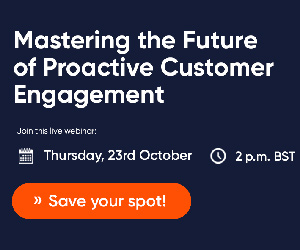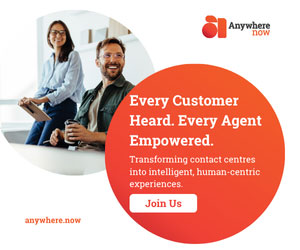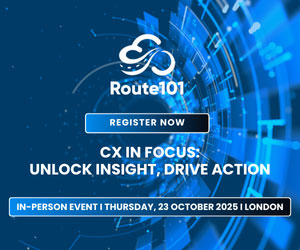Customer service has become one of today’s top differentiators for enterprises across virtually every vertical market.
As organisations struggle to balance customer satisfaction with the drive to increase revenue and minimise costs, they are increasingly exploring technologies and processes that help heighten the customer experience on one hand, and help uncover actionable intelligence for informed business decisions on the other.
Speech analytics – the technology that allows enterprises to mine large volumes of recorded interactions – is among the solutions successfully addressing this need.
Speech analytics solutions are redefining quality in a way that promotes greater customer satisfaction, loyalty and value, while delivering vital information to the contact centre and broader enterprise about the issues and trends driving customer calls in the first place.
In day-to-day operations, organisations tend to leverage speech analytics in an iterative process that typically involves three steps.
Step 1 – Capturing Customer Interactions
Many customers provide the key reasons for their frustration or levels of satisfaction in the everyday interactions they have with an organisation’s contact centre.
While, in many cases, these “insights” are captured by recorded phone conversations, most centres do not leverage the information to influence or change the way they address customer concerns.
They don’t have an automated means by which to perform root-cause analysis. By using speech analytics to automatically build an index from recorded customer interactions, companies can mine for insights and find out why customers feel and act the way they do.
The content serves as an “on-demand focus group,” enabling companies to extract valuable information from thousands or even millions of customers on any given topic.
Step 2 – Analysing Interactions and Creating Valuable Data
Speech analytics software combines the structured and unstructured data collected from customer feedback and customer interactions.
Data-mining engines analyse and surface key circumstances that positively and negatively impact business performance, such as account closures, increases and/or decreases in sales figures and costs.
This “tell me why” functionality allows companies to look at a subset of particular calls to dive deeper into issues. For example, a contact centre manager may search for all calls that received a poor customer feedback score.
In this case, the result of the analysis is a prioritised group of words and terms correlated with poor satisfaction, indicating the reasons for this dissatisfaction – eliminating the guesswork.
The key is having a complete, meaningful index of the words spoken and being able to instantly compare calls of interest with all the other calls.
Step 3 – Taking Action Based on Discovered Insights
By mining all these data sources and presenting the results in a way that immediately prioritises what has the most impact, organisations can quickly take action to optimise the customer experience and maximise overall company performance.
For example, the information can serve as content in eLearning and training sessions to help agents improve communications.
Or, if the relevant action is to place focus on specific high-value calls – such as premium customers calling to close their accounts –supervisors can be automatically notified immediately.
Marketing, financial and product departments also can leverage the intelligence to help improve and adapt company promotions, billing statements and product/service offerings.
Today’s speech analytics are extending the benefits of contact centre recording from workforce quality to enterprise-wide customer process optimisation.
While the contact centre remains the most customer-facing, other enterprise groups play vital roles in what constitutes a positive or negative customer experience.
Back-office operations departments, for example those in order fulfilment, billing and claims processing, are now also benefiting from specific feedback to help them better their processes, increase their accuracy and response times, and help ensure a high-calibre experience.
Organisations leveraging the right tools and committed to acting on customer insights are more likely to reap the benefits and competitive advantages in today’s global markets.
Written by: Rob Wint, Verint Witness Actionable Solutions
For more on contact centre analytics, check out our articles:
- An Introduction to… Contact Centre Analytics
- 16 of the Best Uses for… Contact Centre Analytics
- What Is Customer Journey Analytics and How Can It Benefit Your Organization?
Author: Jonty Pearce
Reviewed by: Hannah Swankie
Published On: 14th Mar 2010 - Last modified: 11th Sep 2025
Read more about - Technology, Speech Analytics





































